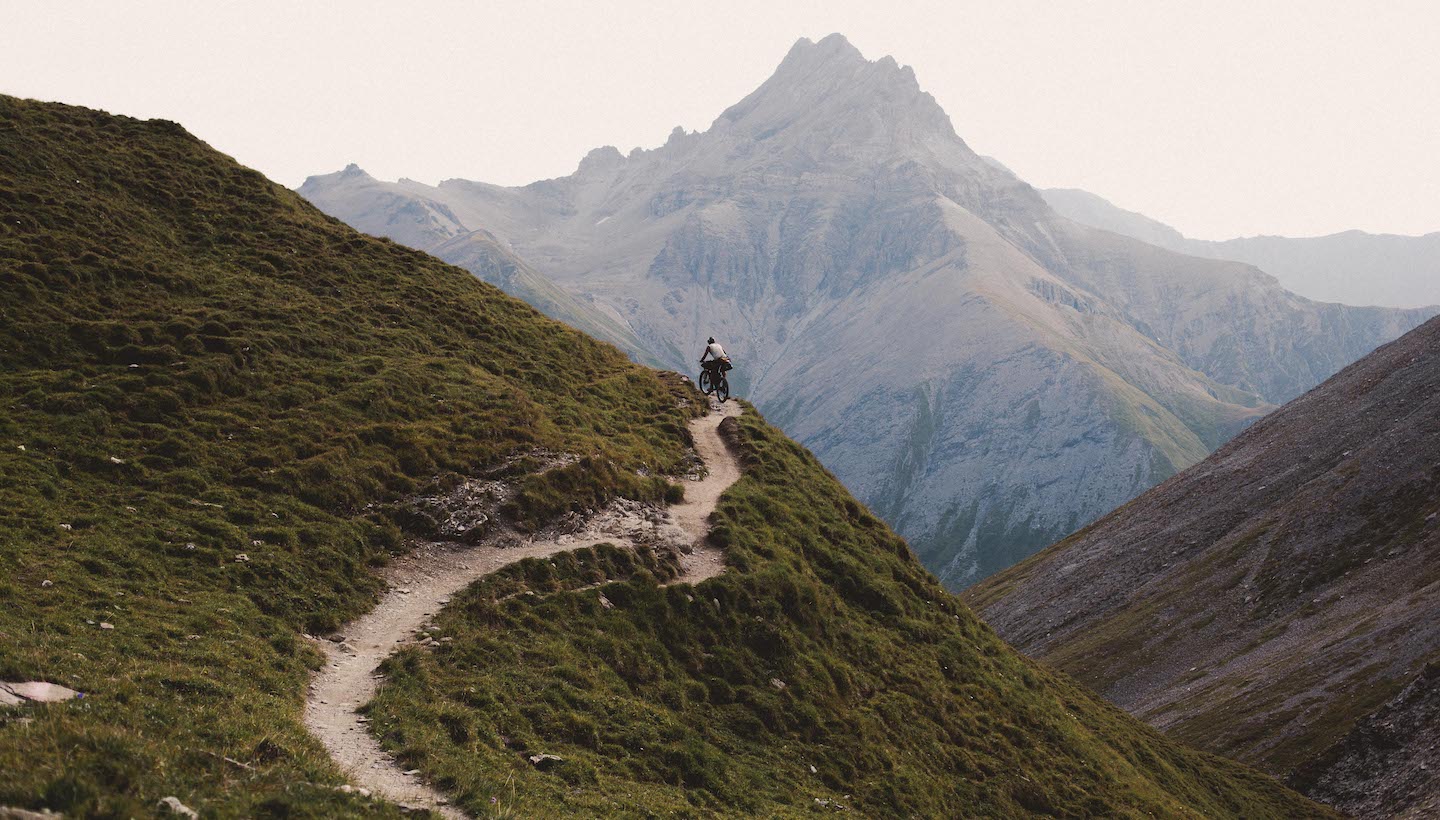Your Cart is Empty
Free Domestic Shipping Over $50 | 30 Day Returns

Words and photos by Franzi Wernsing of Tales on Tyres
“But what if…!” Jona holds up his puffed up down jacket “you mean, what if we get caught in a snowstorm in the middle of July.” I interrupt him to finish his sentence. “I really don’t think so.” He lets his arm sink back down and takes another good look at his pile of clothing. “Not sure” he mumbles to himself. “It might get really cold in the mountains at night!”
Even us, experienced bikepackers and backcountry explorers, each time we are setting out on a trip, we find ourselves wrestling with our gear anew. We squeeze and cram and squash it all into the bags on our bicycles only to pull it all out shortly after, because we ended up packing way too much.
‘Packing light’ is a science of its own and can take a great amount of practice to master. Our first introduction to the art of packing light was during our bike-travels across the Americas. For this multi-year-long trip, we had invested in two sturdy road bikes, equipped with a classic cycle-touring setup of six panniers. With packing space of up to 40 L per pannier, we had enough capacity to bring nearly anything we wanted. Amongst other things this included a foldable kitchen sink, an outdoor shower and a double-sized hammock for each of us. At the beginning, riding from Vancouver up north to Alaska this felt alright as we sticked mainly to paved roads and moderate gradients but soon the monotony of the buzzing sound from our tires rolling over smooth tarmac started to bore us. So we decided to take the Great Divide Mountain Bike Route instead of the all-so-famous Highway 1, to cross the US from Canada to Mexico. For the following three months, we found ourselves pushing and dragging our heavy-loaded road bikes along remote service and double-track roads and it made us wonder if there was an easier way to explore those outlying places.

Separating gear from stuff.
Probably the most challenging part is to streamline all the stuff ‘you-think-you’ll-need’ to the gear ‘you’ll-really-need’ because you won’t fit as much into the lighter and more minimalistic bikepacking bags as you would into a set of heavy panniers. To get a good overview, it can really help to create three piles beforehand. In one you add all the gear you need for camping — tent, sleeping bag and pad, cooking utensils as well as your camping stove. In the second pile, you place what you think is necessary for staying safe — rain gear, a set of extra clothes, a first aid kit, spare parts and your toolkit. In the very last jumble, toss everything which isn’t crucial to your survival, but rather a luxury, like the medium sized travel towel, soap and those clothes for days spent off the bike. It’s necessary to resist the notion to bring something “just in case”; instead, ask yourself if you really need it. If you’re in doubt, leave it out. Needless to say, that the third pile stays where it is, at home.


The core pieces of gear.
Of course, it’s always tempting to throw everything overboard and to start fresh when undergoing a fundamental change. There is some amazing light-weight gear out there and when you just start to think about it, you’ll find that you can ‘lighten’ your load even by changing the smallest things or taking it as far as cutting the handle of your toothbrush. But don’t worry, you don’t really have to plunder all your savings to go ‘lightweight’ or spending the rest of your days awkwardly brushing your teeth with only half-a-toothbrush. Instead concentrate on the core pieces of your equipment. In our case this meant our tent and sleeping bags and pads. We replaced our heavy and roomy all-season tent for the lighter and smaller three season version. Additionally, we traded our bulky, 1.8kg (4lb) sleeping bags for down-filled quilts, weighing no more than 0.9kg (1.9lb) and packing way smaller. In the end, we even decided to keep our old sleeping pads, simply because we did not want to invest more money, and they fit just fine. So instead of spending all our money on new gear, we agreed on replacing only those items which really made a noticeable difference. In the future we might keep exchanging more bits and pieces, but at first it is a smart approach to not worry too much about every nanogram. Carrying some extra weight on a bike is, in the end, more forgiving than actually having it to carry on your back.


The Philosophy.
Going lightweight might be not every cycle tourer’s cup of tea. A few fellow ‘bike tourists’ who skeptically studied our new setups, did not only consider us as spartan but also silently were giving us those pity looks as if we had to suffer under our minimalist approach to bike travel. Our lighter, agile rigs have encouraged us to explore more remote and wild places which we could only dream to do before. And in case the promising looking path turns out to lead nowhere, the relatively light bike makes it less painful if you have to push it for a while.
Of course, we gave up some of our ‘comfort,’ but we also gained an incredible amount of new possibilities of where we can go, and so far we don’t miss the luxuries we have given up.
So before you do change, make sure that it is something you really want, but keep in mind you also don’t really have anything to lose, apart from a gram here and there.
